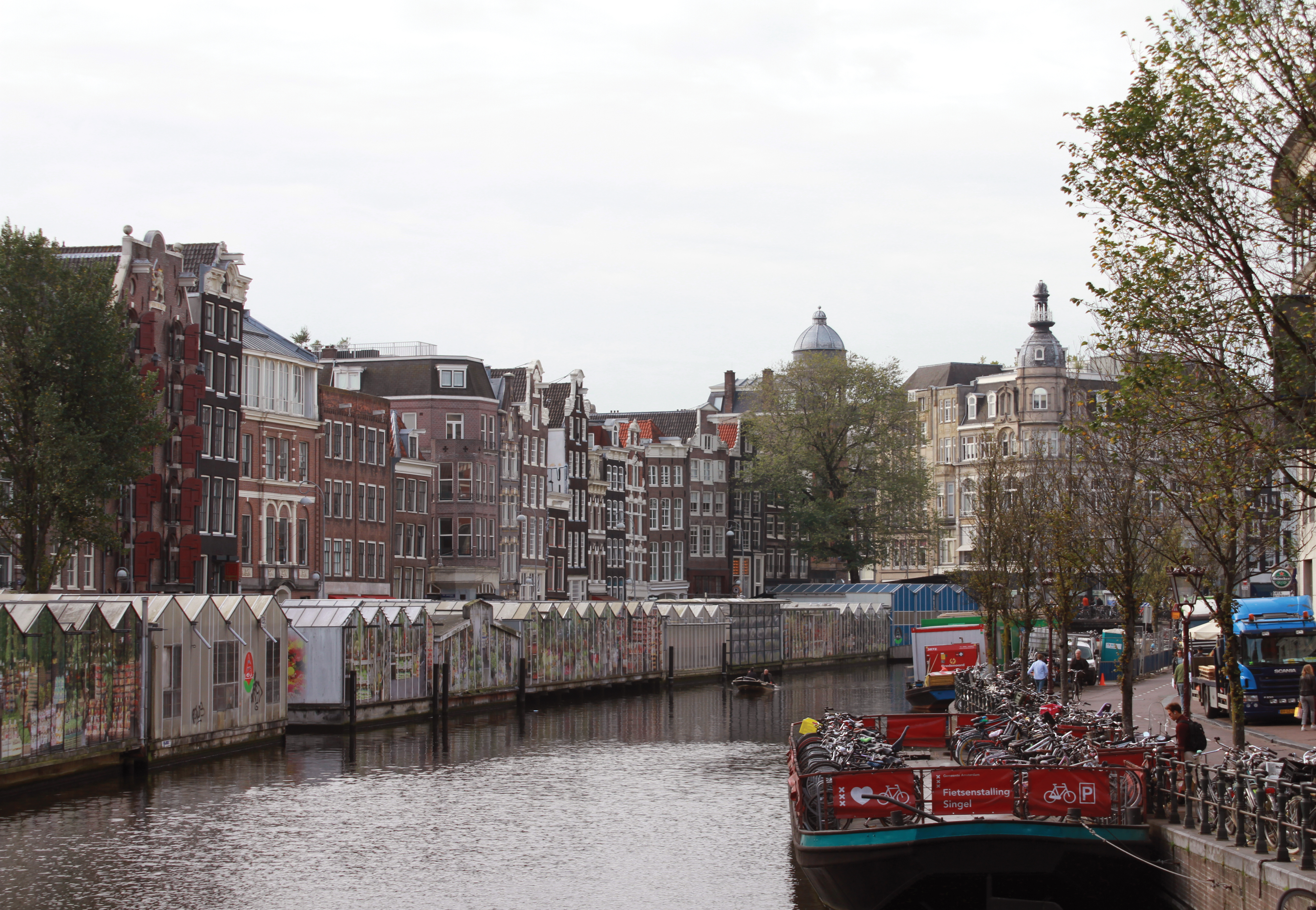
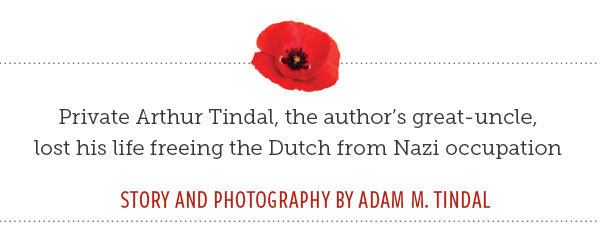
The Battle of the Scheldt was a massive Canadian victory that was largely overshadowed by British and American triumphs of the Second World War. But not everyone has forgotten Canada’s Cinderella Army and the importance of its victory along the Scheldt River in the fall of 1944.
As I arrive in Amsterdam, or ‘Venice of the North’ as it is often called, on Thursday, Oct. 19, I’m greeted by warm sunlight and every temptation one might hope for. After a quick train ride from Amsterdam Airport Schiphol to Amsterdam Centraal station, I emerge in Dam Square and give in to the bliss that sweeps over so many Canadians on arrival in Europe. I lose myself in the city, wandering cobblestone streets past narrow canals and ornate merchant houses, before stopping on a bridge offering an entrancing view. For a moment, the sight of the canals, boats, houses, bridges and bicycles resembles a vivid postcard, but then it turns utterly real and authentic.
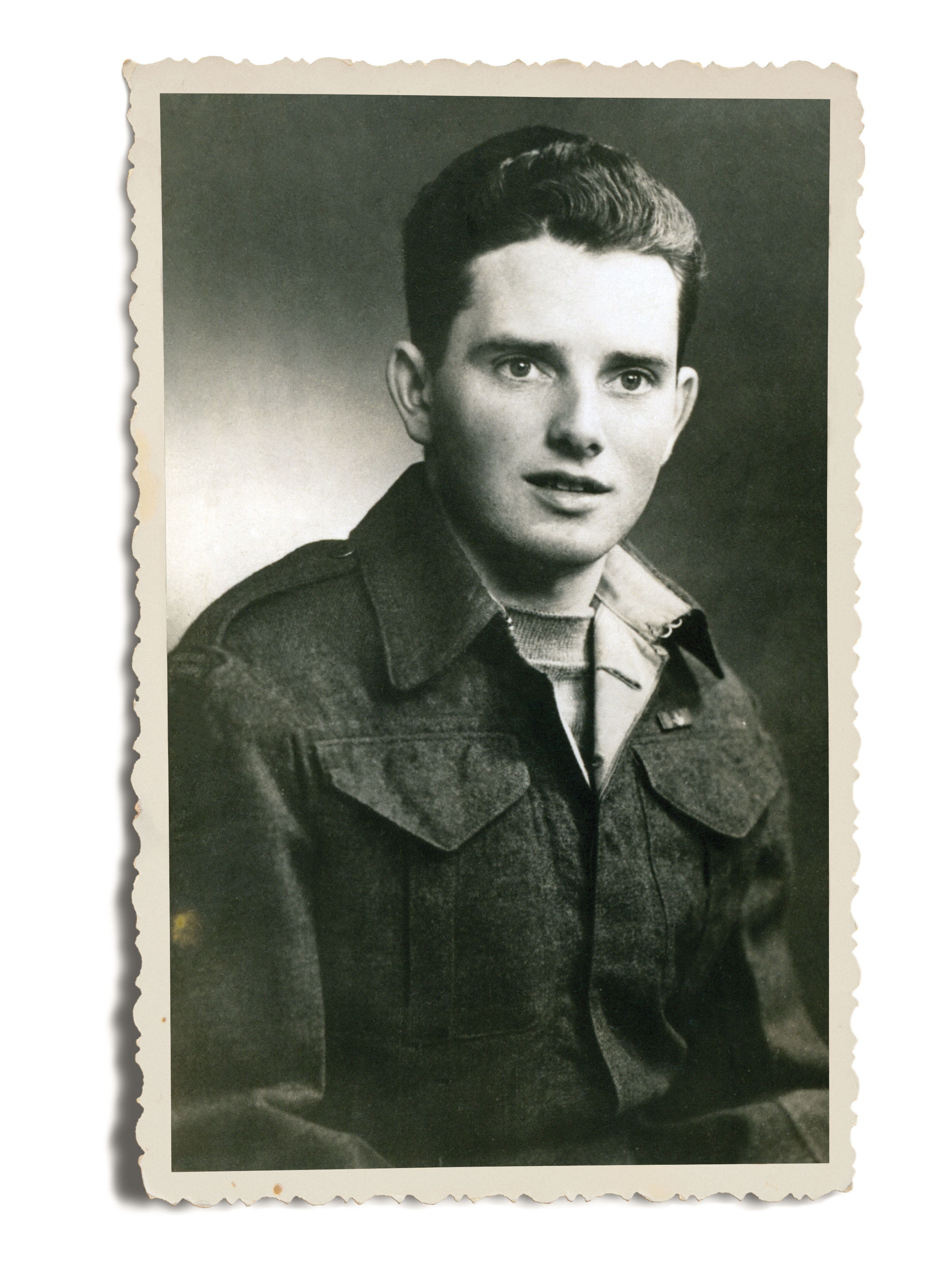
I think of my three great-uncles—Arthur, George and Tommy Tindal—brothers from Morrisburg, Ont., and soldiers in the Canadian army given the tasks of clearing the channel ports and liberating the Netherlands from Nazi occupation. After the war ended, George and Tommy returned to Canada, but Arthur didn’t. He was killed on April 11, 1945, a month before the fighting in Europe ended. He was 22.
As I was growing up in Morrisburg, I would often pass the town’s Second World War memorial, which bears his name. Other than his age at the time of his death, I knew nothing about my great-uncle or what he was like.
Thankfully, more than 70 years later, Arthur is still fondly remembered by his dear sister Fran. “Arthur—often known as ‘Puddy’—was, like many of his peers, a very restless lad of 17 in the summer of 1941,” my great-aunt wrote to me. “I believe the enlistment was partly out of a sense of duty, a certain amount of patriotism, but like many other young men at the time, he thought of it as a chance to leave our small village to go abroad and experience other parts of the world.”
As a private in the 4th Canadian (Armoured) Division, Troops Company, he saw heavy action in Belgium, the Netherlands and Germany. He was the unit’s driver, and they also called him Puddy. He loved horses and cowboys and anything western. He also loved his wife Molly Goldsmith, an English girl he met at a dance while stationed in Dorking, Surrey, in 1942.
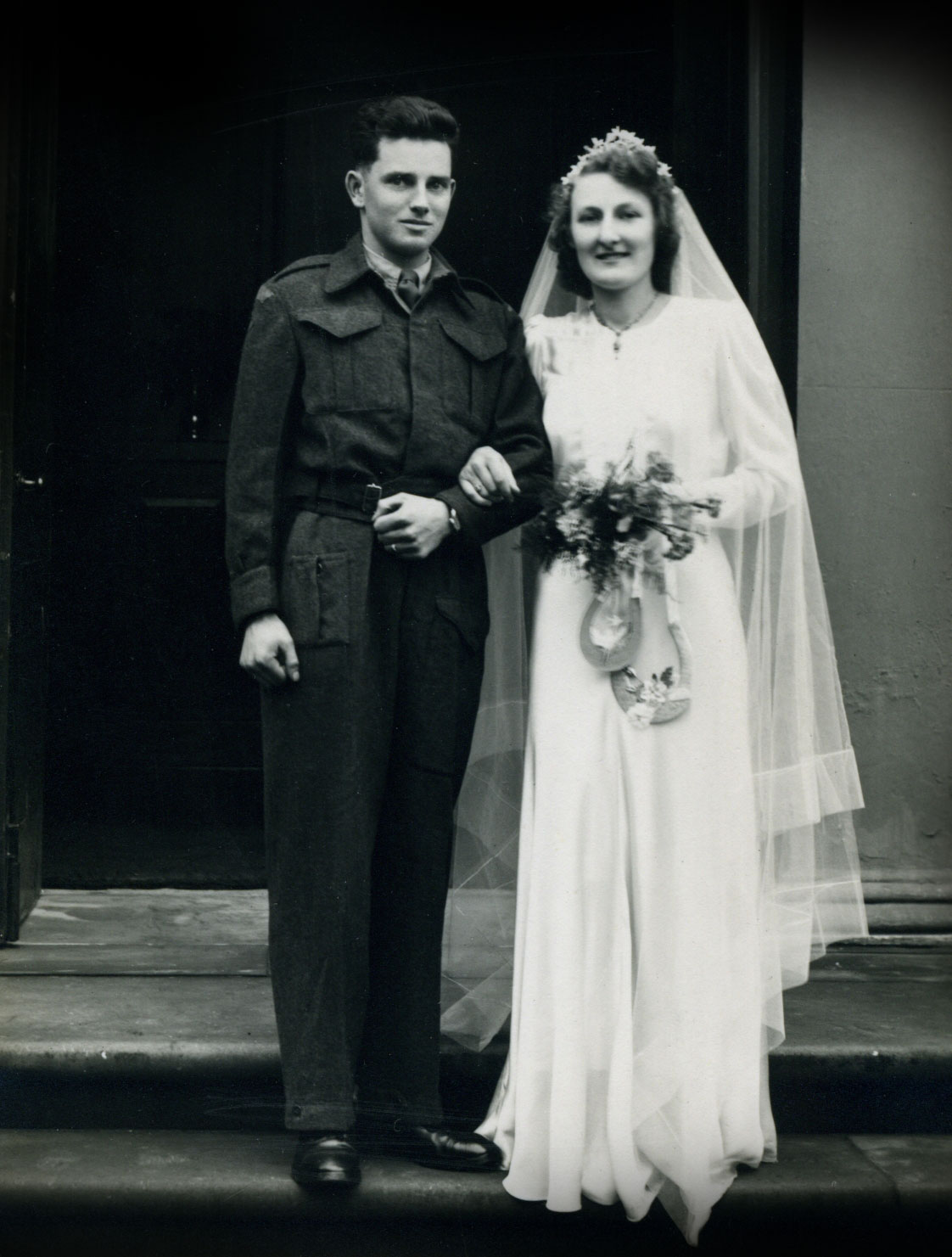
Fran has always remembered Arthur’s service number—C37601—because when on leave, he would let his little sister wear his ID bracelet. After one such leave, Fran went to the train station in Morrisburg to see him off. Arthur was returning to New Brunswick en route to England. “He stepped out to the platform as the conductor signalled for departure. When he saw that I was crying, he threw the bracelet off to me.” Fran kept the bracelet for more than 70 years. In the summer of 2015, she left it at Arthur’s grave in Groesbeek Canadian War Cemetery, near Nijmegen, Netherlands.
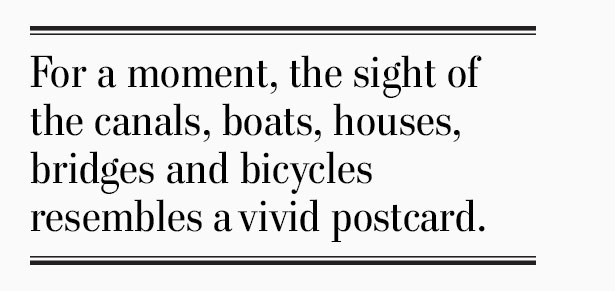
On Friday, my tour of the Scheldt begins. I am travelling to Middelburg, the capital of Zeeland, the Netherlands’ westernmost province, with three other journalists hosted by Liberation Route Europe as part of the Battle of the Scheldt remembrance route. Our three-day journey is led by tour guides, military historians and volunteers—each with a personal connection to the Second World War and the Battle of the Scheldt.
Tour guide Jan Westhoeve leads us to Middelburg Abbey, where we are greeted by members of the provincial council of Zeeland and given an overview presentation on the lead up to the Battle of the Scheldt from Professor Tobias van Gent from University College Roosevelt.

He describes the failures of Field Marshal Bernard Montgomery to drive the German garrisons out of the port cities along the English Channel coast after the Allies secured Antwerp in September 1944. And while Montgomery, wanting to win the war by Christmas 1944, shifted his focus and the majority of his troops toward Operation Market Garden to the east of the Netherlands, the 1st Canadian Army was left alone to fight the Germans along the western Scheldt River.
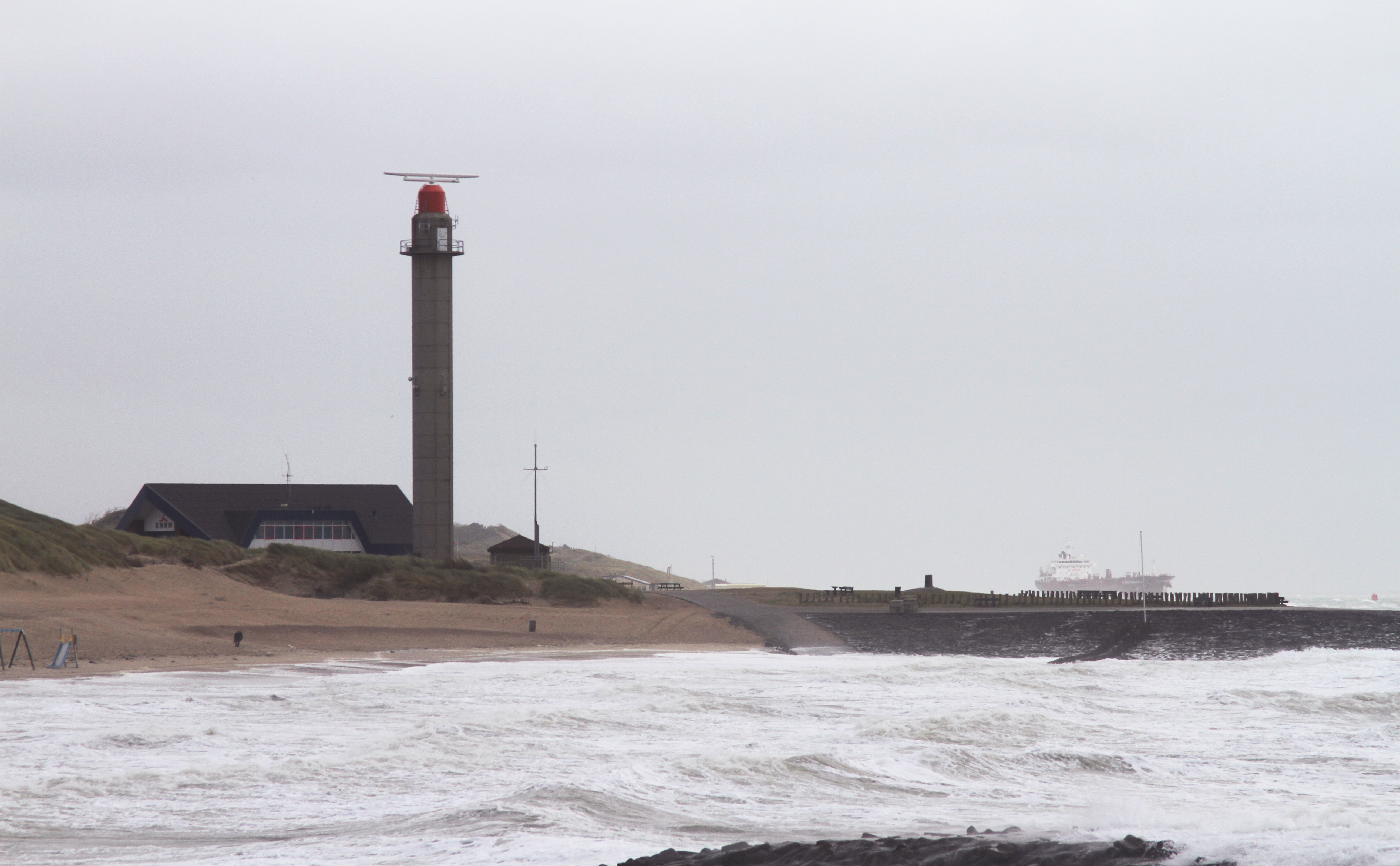
The Netherlands is flat and about a third of the country is below sea level. The people say “God created the world, except for the Netherlands, which was created by the Dutch.” Beneath the windmills and turbines that line the countryside is a network of polders, land protected by dikes keeping seawater out and the mainland dry. On Oct. 31, 1944, when Canadian troops came to liberate the former island of Walcheren (the island was linked to South Beveland by the Sloedam Causeway), the Germans had built bunkers inside dikes at the causeway, providing cover from air bombardment and giving them the advantage of higher ground for their machine guns.
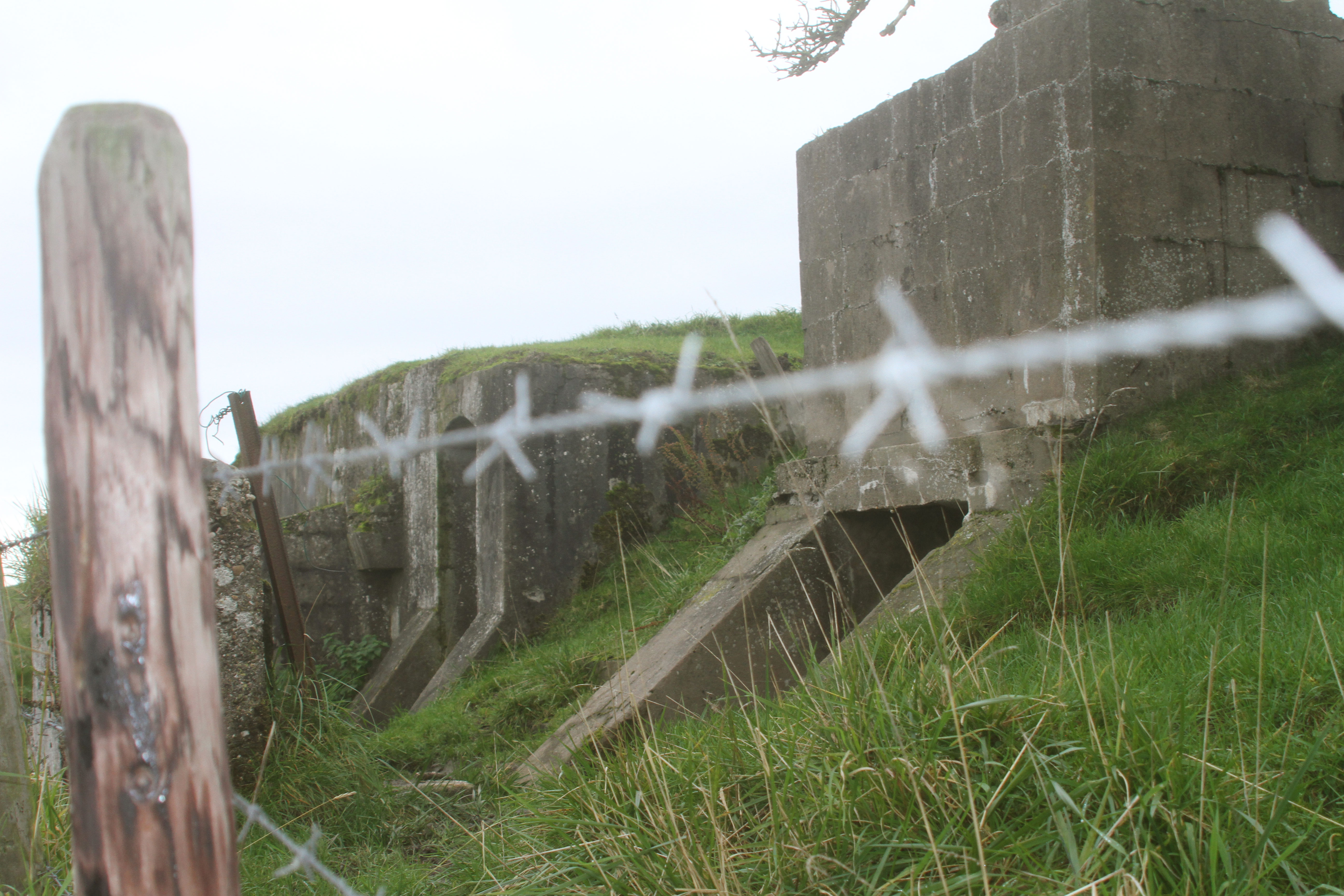
At the end of the five-week offensive, the province of Zeeland was devastated. The Battle of the Scheldt cost 12,873 casualties, of which 6,367 were Canadian. Thousands of civilians died, families were displaced, farms were flooded, food was scarce, and the majority of homes, shops and churches were submerged or in rubble from the constant bombardment from both Allied and German troops.

It is for precisely these reasons that the citizens of Zeeland are ensuring their people’s history won’t be forgotten.
On Saturday, we travel the countryside to Nieuwdorp and visit Stef Traas, director of the Liberation Museum Zeeland, the only museum in the Netherlands dedicated to the Battle of the Scheldt. Staffed by dozens of volunteers, the museum began with the donation of a private collection from Traas’s father, Kees. The collection, he proudly tells me, began with a Canadian helmet Kees’s father Lau was given as a boy after tending a wounded Canadian soldier while another soldier went for help. The museum gathers artifacts and first-hand accounts and experiences of the soldiers and townspeople. It is undergoing a large expansion, which will be completed in 2019, in time for the 75th anniversary of the liberation of Zeeland.
We leave the museum and head to Fort Breendonk, a military fortification turned Nazi prison camp near Antwerp, Belgium. It is one of the best-preserved intact Nazi prison and concentration camps.
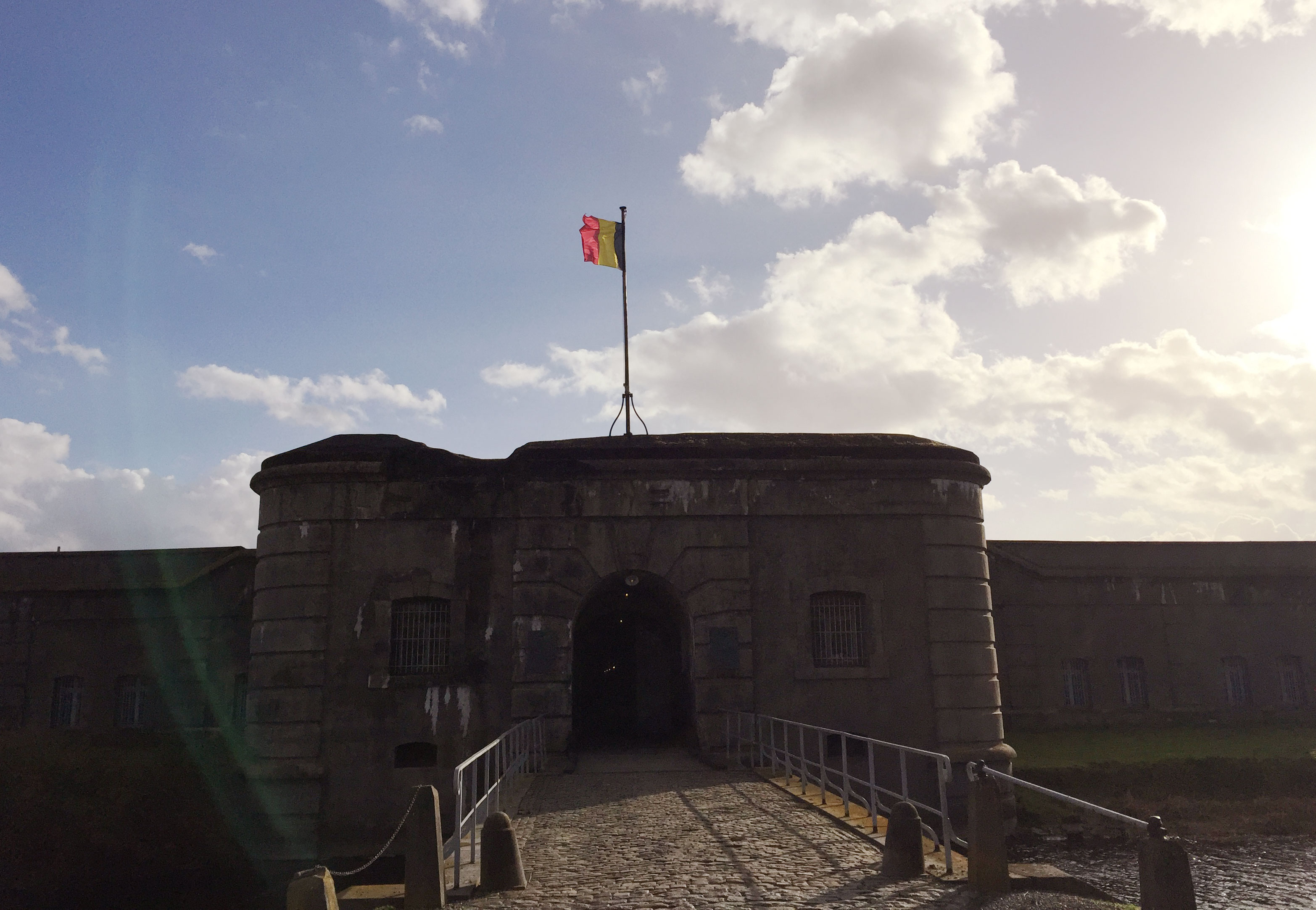
Tour guide Kevin Polfliet meets us at the gates. He explains the history of the fort and how it came to be a Nazi prison for political prisoners, resistance fighters and Jews. He then pauses and singles me out:
“Do you want to know what would happen to the prisoners upon arrival?” he asks.
As I begin to form an answer, he comes within inches of my face and in deafening German yells, “SCHNELL! SCHNELL! SCHNELL! SCHWEINHUNDE, GEGEN DIE MAUER! MÜTZEN AB!” This is followed by a series of even louder German orders hastening prisoners to strip down and lean up against the wall for inspection.
This was common treatment of new inmates, after which they were escorted to the courtyard and made to stand still for up to 24 hours. Once “broken,” the prisoners were crammed into a cell made for 10 but holding 40. In winter, the cold was unrelenting. There wasn’t much food and clean drinking water was rare. Inmates who managed to fall asleep at night would suddenly be wakened by the screaming, yelling and flailing of inmates being tortured.
Polfliet takes us into that torture chamber. It’s empty, apart from a thick steel hook dangling from a chain in the middle of the poorly lit room. Beneath it lays upended planks of wood and behind it lurks a shadow that tells of a dark past. The Nazis used it for strappado, a form of torture where a victim with hands tied behind the back is suspended from the hook, resulting in dislocated shoulders and excruciating pain. An estimated 303 of the 3,590 prisoners here died or were executed. Another 1,741 died after transportation to other Nazi concentration camps.
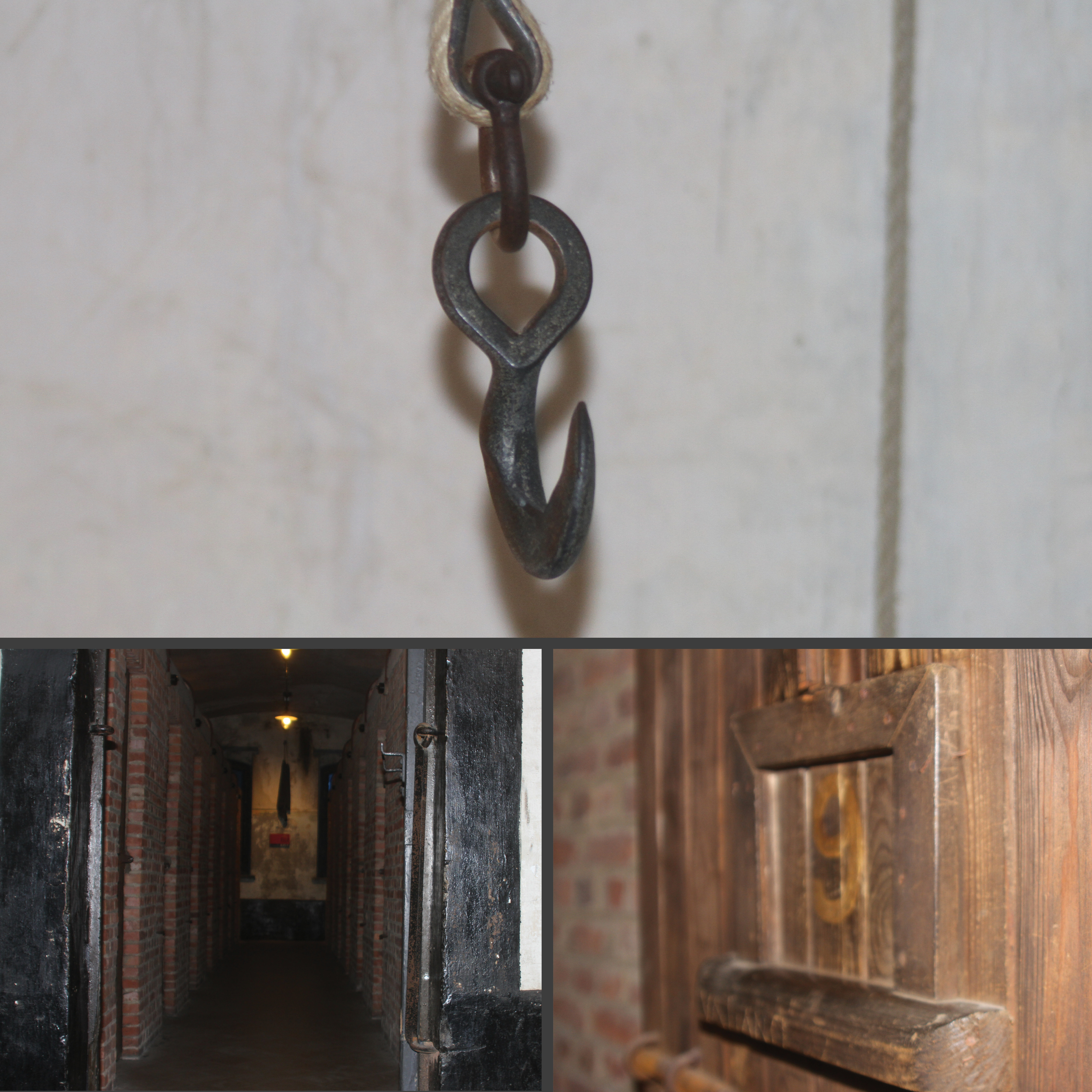
On Sunday at the Bergen-op-Zoom Canadian War Cemetery, north of the Scheldt estuary, hundreds have gathered under rain clouds to commemorate the liberation of the Nazi-occupied region by Canadian troops in the fall of 1944. Among those attending the ceremony are veterans, families of veterans, students, cadets and members of the Liberation of the Netherlands branch of The Royal Canadian Legion, the only RCL branch in the Netherlands. The site is particularly meaningful to me because Arthur’s unit drove the Germans out from Bergen op Zoom.
Before the ceremony begins, I veer off from the crowd and walk the rows and rows of headstones. After learning about the conditions in which these soldiers fought, today’s weather seems appropriate. I stand among the graves of 1,118 Commonwealth soldiers, most of whom fought in the wet and muddy Battle of the Scheldt. More than 900 are Canadian. Few of them were over 25—my age.
The ceremony starts and Sabine Nölke, Canada’s ambassador to the Netherlands, speaks: “I see these stones and similar ones across this beautiful country, and I always ask myself the same question: Who were the people we commemorate, and what are they trying to tell us. What would they tell us if they had the chance?”
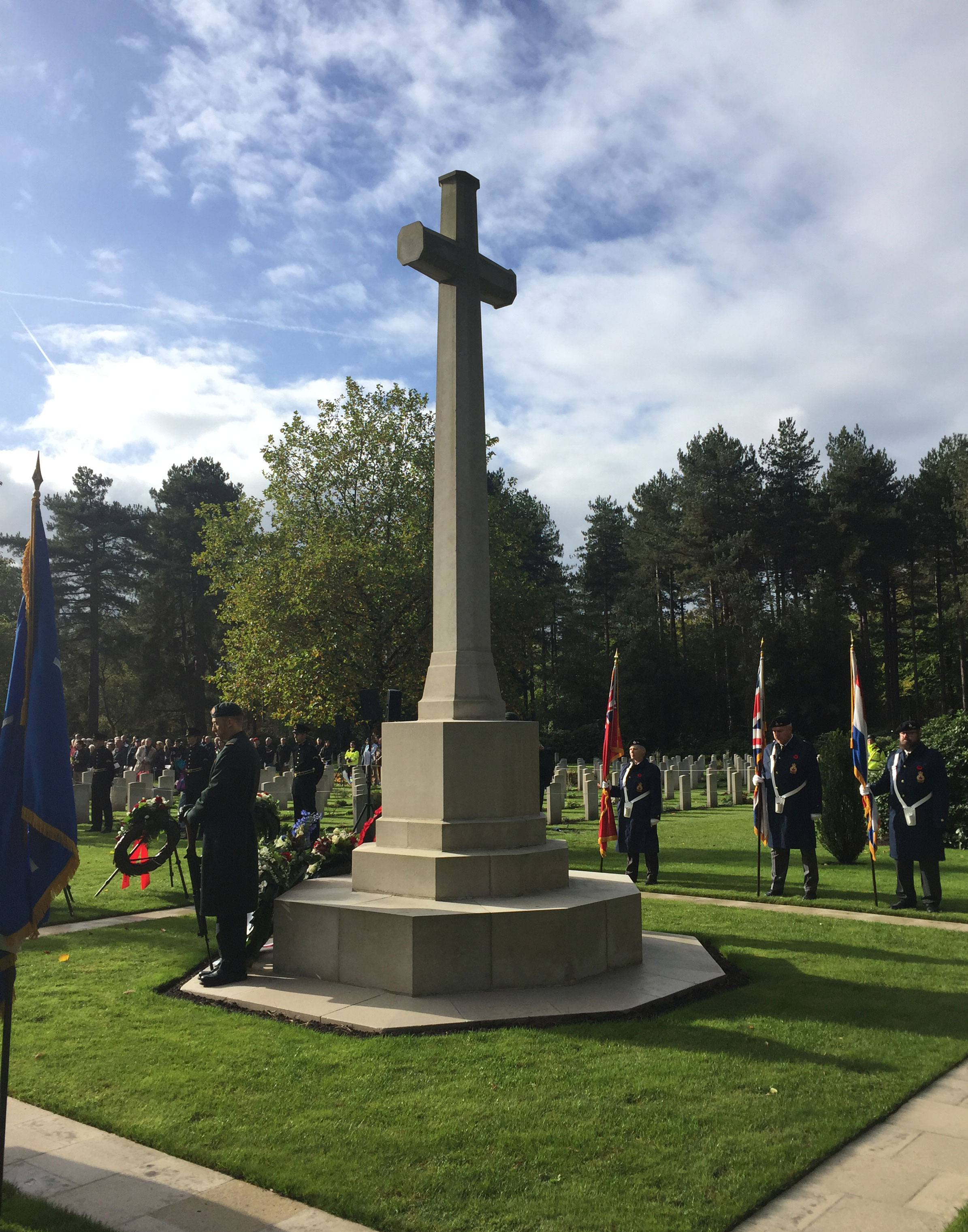
The audience stands silent and pauses in reflection. A band plays “Abide with Me,” followed by a bugler playing “Last Post.” The rain stops, the clouds begin to dissipate, and the sun pierces the sky for a moment. From a distance comes the sound of an old friend immediately recognized by some of the veterans: Spitfire. After the flyby, representatives from Canada, the Netherlands and other Allied nations place commemorative wreaths on the monument. It is a poignant ceremony honouring the dead, ensuring “their name liveth for evermore.”
Following the ceremony and reception, author and historian Robert Catsburg takes us on a battlefield tour near the town of Woensdrecht. He describes the sheer strength and resilience it must have taken for the Canadians to fight the Germans over this long, stretching and complex battlefield. Catsburg’s nearby hometown of Oostberg was completely destroyed by German and Canadian bombardments, its people forever grateful for the peace brought by Canadian troops.
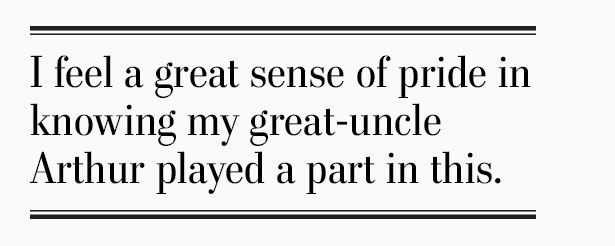
We finish the day over coffee and stroopwafels on a short lane called Canadalaan before returning to the Grand Hotel de Draak—the oldest hotel in the Netherlands. It was used as a barracks for Canadian troops in November 1944.
I step outside the hotel to find a pub, but discover that most are closed, a Sunday night tradition in Dutch cities. Canadian flags fly above each empty boutique, bakery, café and pub, creating a red-and-white dazzle in the night sky. This is part of Canadays, the region’s annual commemoration of the liberation.
Almost 75 years later, the people here haven’t forgotten Canada’s Cinderella Army: a group of Canadian boys and men who defeated the German army along the channel ports, opened an Allied supply line, and liberated the Dutch people from Nazi occupation. I feel a great sense of pride in knowing my great-uncle Arthur played a part in this.
I can’t imagine the pain Molly, George, Tommy, Fran and the rest of the Tindal family must have felt on hearing of the death of their beloved Arthur. But I will always remember Fran telling me how in the winter of 1944-45, the three brothers all happened to be on leave in Holland and met up at a theatre to watch a play. It gives me great hope knowing that in one of the darkest and deadliest times in human history, George and Tommy were able to find some sort of beauty and joy with their brother Arthur, even if for the last time.
I only wish I’d had the chance to meet him.
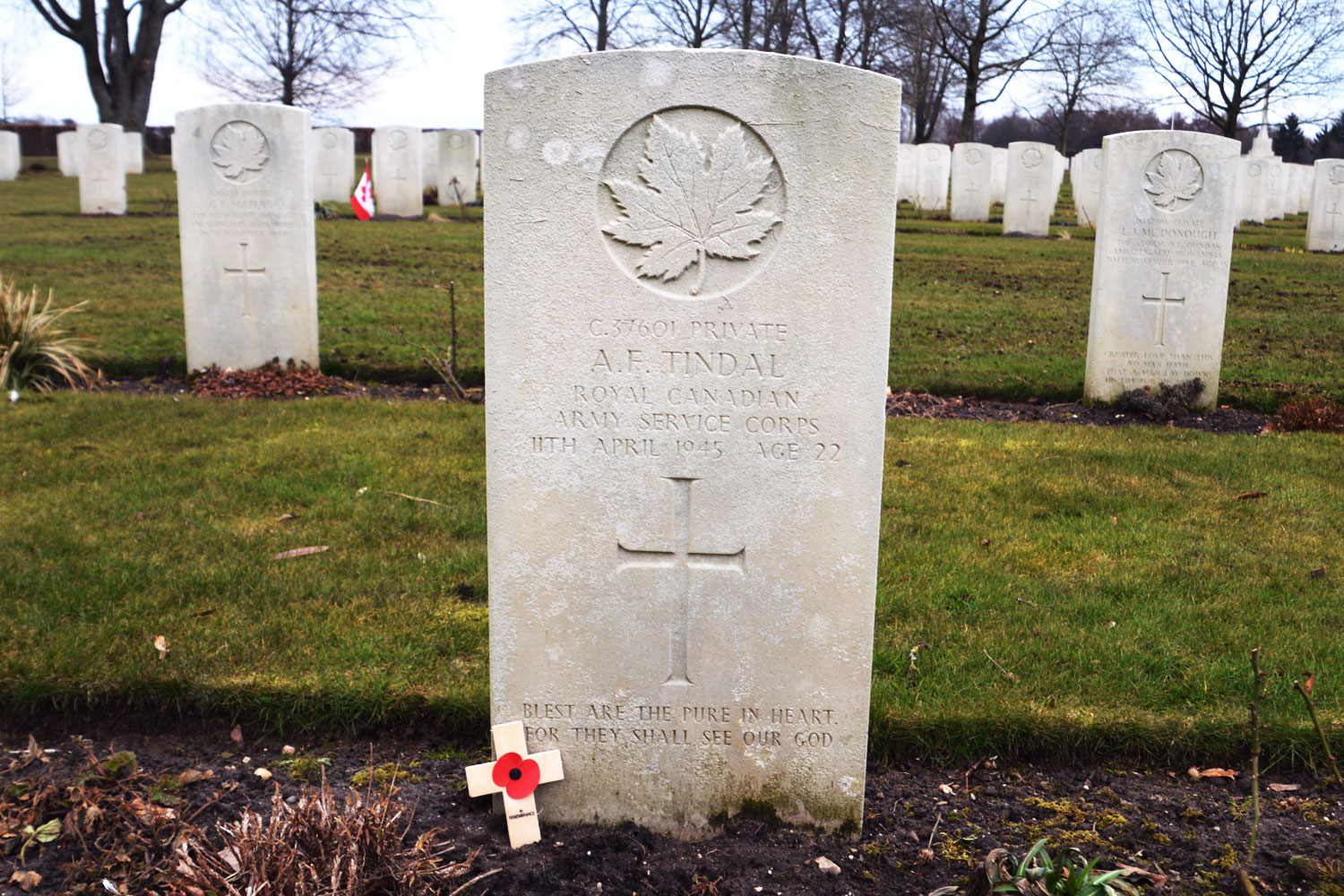

For information on Holland, visit: www.holland.com
For information on Liberation Route Europe, visit: https://liberationroute.com/
Advertisement











4 Comments
Great article. It was nice to be your guide in Zeeland. Be proud of your great-uncles.
Thank-you Adam for a very memorable and personal account of your family’s service and sacrifice during the Second World War #RememberThem #NeLesOubliezPas
My father was there with his regiment, The Lincoln and Welland Regiment. He spoke of the places mentioned in the article and being in the Scheldt. His regiment was very hard hit with losses and wounded. My dad did not speak a great deal about what he and his friends went through; it was too painful for him. He made it home and so did his brother Arthur, who was in Transport. My Dad was Walter Taylor. He was asked to be a cook when the company cook’s tent was bombed in Cromar England and nine of the cooks were killed. Dad had been a grocery manager for T. Eaton’s Co. at the College St. store in downtown Toronto. He had to run a field kitchen and make meals for the troops, and even though he was not directly in battle, it was all around him. Sadly, his other job was to help bury the soldiers who had been killed. They had their dog tags on and were wrapped in a Canadian blanket until they were buried in cemeteries after the war. At the end of the war he was asked to go and help with the children left in Bergen-Belsen concentration camp and help prepare meals for them. He did not go home until March 1946. Thanks for the article on the Scheldt. Canadians had a lot to be proud of. They were very brave young men.
Very memorable!
Comments are closed.